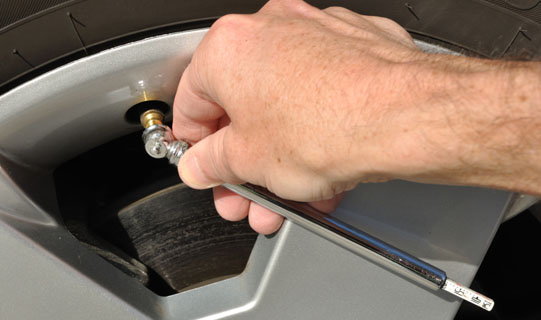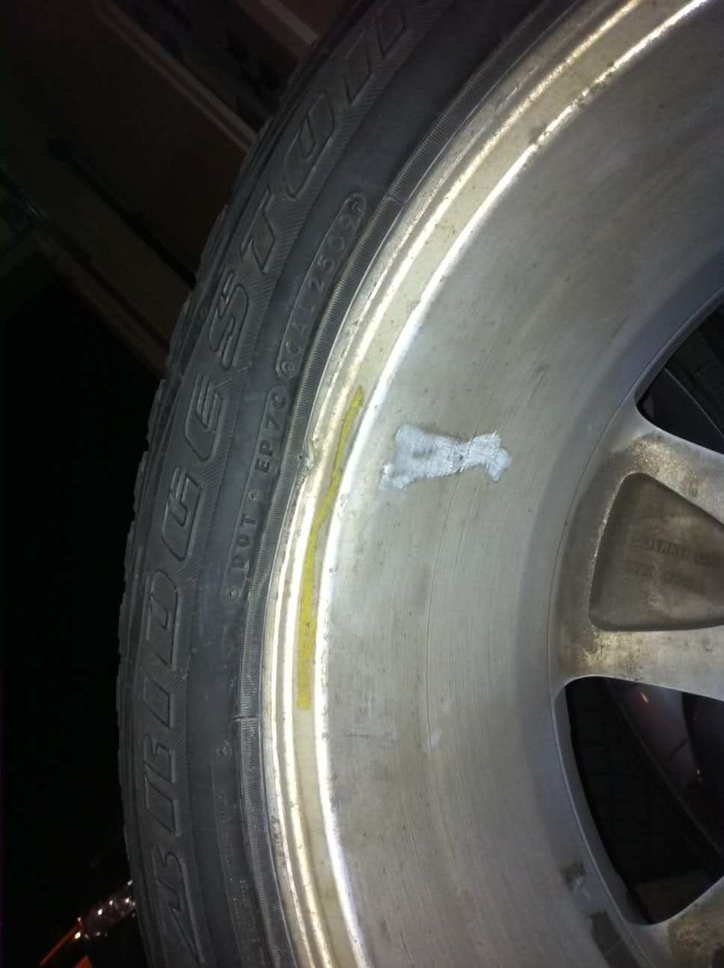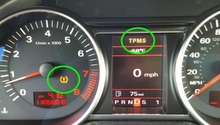Acura MDX: Why is My Tire Pressure Light On?
The tire pressure warning light goes on when there is a change in your Acura MDX's tire pressure. Read on to learn the specific triggers of this warning light.
This article applies to the Acura MDX (2001-2013).
There are a few reasons why the tire pressure warning light would go on in your Acura MDX. The obvious reason is because of a change in your tire pressure, but why is there a change in your tire pressure? The warning light is your car's way of telling you something has gone wrong with a certain component, and since the manufacture can't put a sensor in each nut and bolt in your Acura, the warning light works as a general warning. In this particular case, whenever you see your tire pressure warning light, there are a few things that you can check to diagnose the issue. Read on to discover the issue behind your tire pressure warning light.

Materials Needed
- Tire gauge
- Soap and water in a spray bottle
Step 1 – Check tire pressure
It could be low.
A change in the tire pressure doesn't necessary mean there is an air leak. The outside temperature could also play a role. Hot temperatures can expand the air in the tires, whereas cold temperatures can deflate it. So before assuming the worst, check the tire pressure, then compare it to the recommended tire pressure on the placard in the driver's door jamb. It's important you keep all tires running at their recommended tire pressure, or else it could cause premature tire wear and bad handling.

If tire pressure isn't the issue, proceed to Step 2.
Step 2 – Check for leaks
Your tire(s) could be leaking air.
Your tires are your car's shoes, which mean they are constantly making contact with the road where nails and other foreign objects reside. To check for leaks, spray some water with soap onto your tire, then look for any bubbles. If you see bubbles, this means there is a small air leak in that area. Check around your rim for any bends; drivers bend their rims all the time while parallel parking, and a small bend in the rim could let air out of the tire. Finally, check around the stem valve for any leaks. Spray water and soap on the valve; if you see any bubbles, then your stem valve is leaking.

If there are no leaks, proceed to Step 3.
Step 3 – Replace TPMS sensor
It could be faulty.
TPMS stands for Tire Pressure Monitor Sensor, and it is located on the inside of your tire, attached to the valve stem. If you have the proper recommended air pressure for each tire, but the warning light never goes off, then you most likely have a faulty TPMS. The tire pressure sensors aren't expensive; however, it's recommended you have the tire removed at a professional tire shop, because attempting to separate the tire from the rim without the proper machine could damage your rim. The TPMS can easily be replaced once you remove the tire from the rim.

Related Discussions
- TPMS Sensor - Acurazine.com
- Tire Pressure Warning Light - Acurazine.com
- Tire Pressure - Acurazine.com






